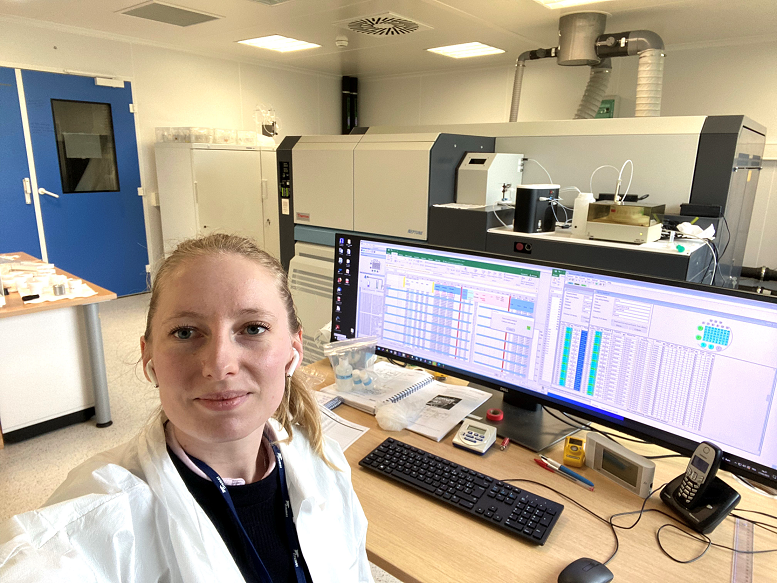Thanks to the generous DEEP Grant I was awarded in 2022, I was able to travel to Brest and add a new set of samples to my PhD, providing me material to build the first copper isotopes time series in hydrothermal fluids from the Manus Basin.
In my PhD project, I am investigating Cu isotope fractionation as a tracer for processes affecting the formation of sulfides deposits in seafloor hydrothermal systems. I am working on different geological settings (from oceanic ridge to back-arc systems) with both hydrothermal fluids venting at the seafloor and hydrothermal chimneys from which these fluids exit. However, natural samples data lack to better characterize the processes involved in the copper isotope variations. Therefore, having access to samples collected after my current set of samples represent a huge progress in the understanding of the hydrothermal fluid composition stability over time and the copper isotope behavior in such active systems.
I have been welcomed in the Geo-ocean group and more particularly in the CYBER team at Ifremer in Brest, France. Under the supervision of my host, Olivier Rouxel, and surrounded by a fantastic team of technician and engineer, I started by processing the hydrothermal fluids samples by following long chemical procedures. The objective was to isolate Cu from the rest of the samples matrix. All the chemistry was done in a clean lab, which requires a special gear (Picture 1). This gear in composed of a suit covering most of the body, and completed with gloves, glasses and lab shoes. The reason behind that is to avoid any contamination from cloth, hair, etc… to the samples but also to protect the scientist from the various concentrated acid used for the chemical procedures.
Then, from these pure copper solutions, I measured Cu isotopes on a MC-ICP-MS (multi-collector inductively-coupled plasma mass spectrometer) Neptune at the Spectrometry Pole of Ifremer (Picture 2).
This collaboration has been beneficial for me not only by adding samples to my project, but also by providing me with a full sample processing method from another lab. It has also given me the opportunity to work myself on the Neptune MC-ICP-MS instrument, and the chance to develop international collaborations. I am particularly grateful to my host, Olivier Rouxel, to my PhD supervisors, Desiree Roerdink and Eoghan Reeves, and to DEEP for this experience in Brest.

